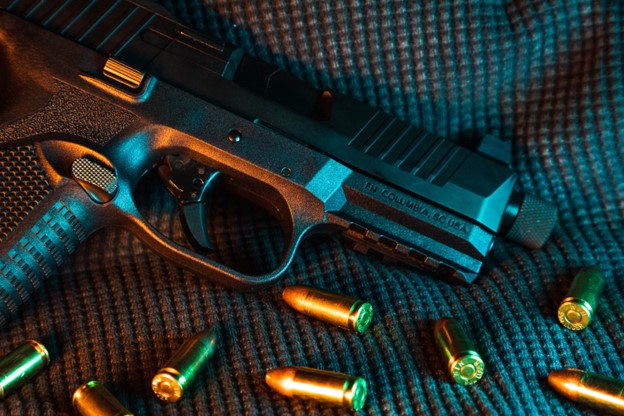
Glock is typically considered to be one of the most reliable gun manufacturers around. But like any other firearm, it is a mechanical device. The more you use it, the likelier it is to break down. Fortunately, all its common malfunctions have simple fixes. Here are five of the most common issues with Glock pistols and how to address them.
Modular Optic System (MOS) Issues
Glock engineers developed the MOS system to make it easier for users to mount optic sights without expensive slide customizations. The system is designed to enable you to mount your chosen sights fast and easy with just a few tools, but many shooters, especially beginners, need help using this system.
The most frequently reported problems with the Glock MOS are sight alignment, optic mounting, and optic compatibility issues. If you’re having a challenge mounting your optic, verify that it is compatible with your Glock model. Certain optics need specific mounting adapters and plates to fit correctly. Also, you can check to confirm that you have tightened the mounting screws to the torque specifications of the manufacturer.
If your optic mounts properly but the picture from your sight is inconsistent or off, review the alignment of your sight. Some optics need adjustments to elevation and windage to close in on targets.
Extractor Issues

The extractor is the spring-loaded section of your gun that helps eject fired cartridges from your pistol’s chamber. In most cases, if the extractor malfunctions, it’s because its depressor channel has been damaged. The result is friction between the depressor spring and extractor, slowing motion and making it difficult to eject spent cartridges.
The other probable cause of Glock extractor issues is a broken extractor. This occurs when there is insufficient tension to direct bullets into the chamber properly. If you have issues with your extractor but are not sure what’s causing them, acquire a Glock extractor plunger assembly. This kit will help you examine the extractor and replace any worn-out or faulty parts.
Feeding Issues
Imagine you’re at a shooting range, ready to display your marksmanship to your friends and fellow shooters. You have your Glock and everything ready, but the ammo simply won’t feed correctly into the chamber. This is frustrating and can take the joy out of the whole experience.
Feeding problems are often due to poor feed ramps, recoil springs, and magazines. At times, the noses of the bullets dive into your Glock’s feed ramp; sometimes, they rub against the edge of your chamber. In all cases, feeding problems interfere with the cycle and can cause jams. You don’t want to be the only one clearing jams as the rest put rounds downrange.
To fix this issue, regularly clean your magazine to ensure the followers and springs function optimally, facilitating smooth feeding. Also, clean and lubricate your feed ramp to eliminate any debris. Lastly, using high-quality ammo can make a huge difference. Cheap rounds may have inconsistent sizes and shapes, adding to your feeding problems. They can also use materials that lead to corrosion if you don’t clean your weapon regularly (which you should be doing anyway).
Trigger Problems
If you fire your gun often, you will break your trigger spring at some point. A broken trigger spring makes it difficult to reset your trigger after shots break. However, your gun still functions. You can hold your trigger to the back or move it forward after firing every round. This is irritating and can be dangerous if you are in a self-defense situation.
To fix a broken or faulty spring, you have to replace it. In fact, since a standard trigger spring will eventually break from repetitive shooting, you can change it after every 10,000 rounds. If you don’t want it to break, use a trigger spring that compresses instead of stretching. The only problem is that these will increase your pull weight to between eight and 12 pounds from the standard 5.5 pounds. Regular cleaning and lubrication also help avoid other trigger problems not associated with a broken spring.
Problems with the Click
When you fire your Glock, you should hear a bang. If you hear a click, your gun has a click problem. A lot of times, this problem arises from the firearm or ammo. However, it could also be due to a dysfunctional magazine. To check, tap your magazine base plate firmly to ensure the magazine is positioned correctly. Afterward, empty the chamber and load new rounds.
A round may not be chambered even after loading a fresh magazine with reasonable force onto the Glock if you have a weak magazine. You should replace your magazine to prevent further pistol malfunctions in such cases.
Final Thoughts
Overall, every gun that is fired regularly will malfunction at some point. Despite these common issues, Glock remains a solid pistol. You should only ensure you clean and lubricate your gun regularly, and replace faulty parts quickly.
Latest posts by Tactical Gun Review (see all)
- Bow hunting – an unforgettable experience – April 24, 2025
- Is MagnaCut the Next Breakthrough in Knife Steel? – December 17, 2024
- The Importance of Proper Gun Cleaning and Maintenance – October 30, 2024

Leave a Reply